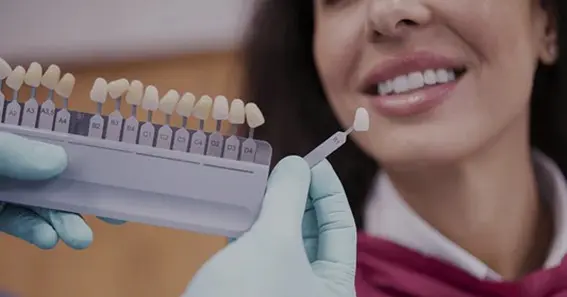Achieving a natural-looking dental restoration requires a careful selection of the porcelain dental crown color. Dentists utilize standardized shade guides to match crowns to the patient’s existing teeth, ensuring a harmonious and aesthetically pleasing smile. This guide delves into the intricacies of the porcelain dental crown color chart, and factors influencing shade selection, and provides answers to frequently asked questions.
Understanding the Porcelain Dental Crown Color Chart
The most widely used tool for selecting dental crown shades is the VITA Classical Shade Guide. This guide categorizes tooth colors into four main groups, each representing a specific hue:
- A (Reddish-Brownish)
- B (Reddish-Yellowish)
- C (Grayish)
- D (Reddish-Grayish)
Each group contains shades numbered from 1 to 4, with 1 being the lightest. For instance, A1 is lighter than A2. This system allows for precise matching of the crown to the patient’s natural tooth color.
With the advent of teeth whitening procedures, the demand for whiter shades increased, leading to the introduction of bleached shades such as BL1, BL2, BL3, and BL4, with BL1 being the lightest.
Factors Influencing Shade Selection
Selecting the appropriate shade for a porcelain dental crown involves several considerations:
- Natural Tooth Color: The crown should blend seamlessly with adjacent teeth to maintain a natural appearance.
- Skin Tone and Complexion: The hue of your skin can influence the perceived brightness of your teeth. For instance, fair skin tones may complement lighter shades, while darker complexions might harmonize with slightly deeper shades.
- Age: Natural teeth tend to darken with age. Choosing a shade that aligns with your age can enhance the authenticity of the restoration.
- Personal Preferences: Some patients prefer brighter, whiter smiles, while others opt for shades that closely match their natural teeth.
- Material of the Crown: Different materials, such as porcelain, ceramic, or resin, have varying translucency and color properties, affecting the final appearance.
Tips for Choosing the Right Shade
- Consult with Your Dentist: Leverage your dentist’s expertise and experience in shade selection. They can provide professional advice tailored to your specific needs.
- Consider Teeth Whitening: If you plan to whiten your teeth, do so before selecting the crown shade to ensure a consistent color match.
- Evaluate in Natural Light: Assessing tooth color under natural lighting conditions can provide a more accurate representation.
- Use Shade Guides: Utilize tools like the VITA Classical Shade Guide to compare and select the most suitable shade.
FAQ
1. What is the VITA Classical Shade Guide?
The VITA Classical Shade Guide is a standardized tool used by dental professionals to match the color of dental restorations to natural teeth. It categorizes shades into four groups (A, B, C, D) with varying hues and brightness levels.
2. How do bleached shades differ from natural shades?
Bleached shades, such as BL1, BL2, BL3, and BL4, are designed to match teeth that have undergone whitening treatments, offering brighter options compared to natural shades.
3. Can I choose a shade lighter than my natural teeth?
Yes, you can choose a lighter shade, especially if you plan to whiten your natural teeth. However, it’s essential to ensure the crown blends well with your overall smile.
4. Does the material of the crown affect its color?
Yes, different materials have varying translucency and color properties, which can influence the final appearance of the crown.
5. How long do porcelain crowns maintain their color?
Porcelain crowns are known for their durability and color stability. With proper care, they can maintain their appearance for many years.
Selecting the appropriate shade for your porcelain dental crown is crucial for achieving a natural and harmonious smile. By understanding the color chart and considering individual factors, you can work with your dentist to make an informed decision that enhances both aesthetics and confidence.
It’s essential for patients to work closely with their dental professional to choose the most appropriate color, ensuring a natural and long-lasting smile.










